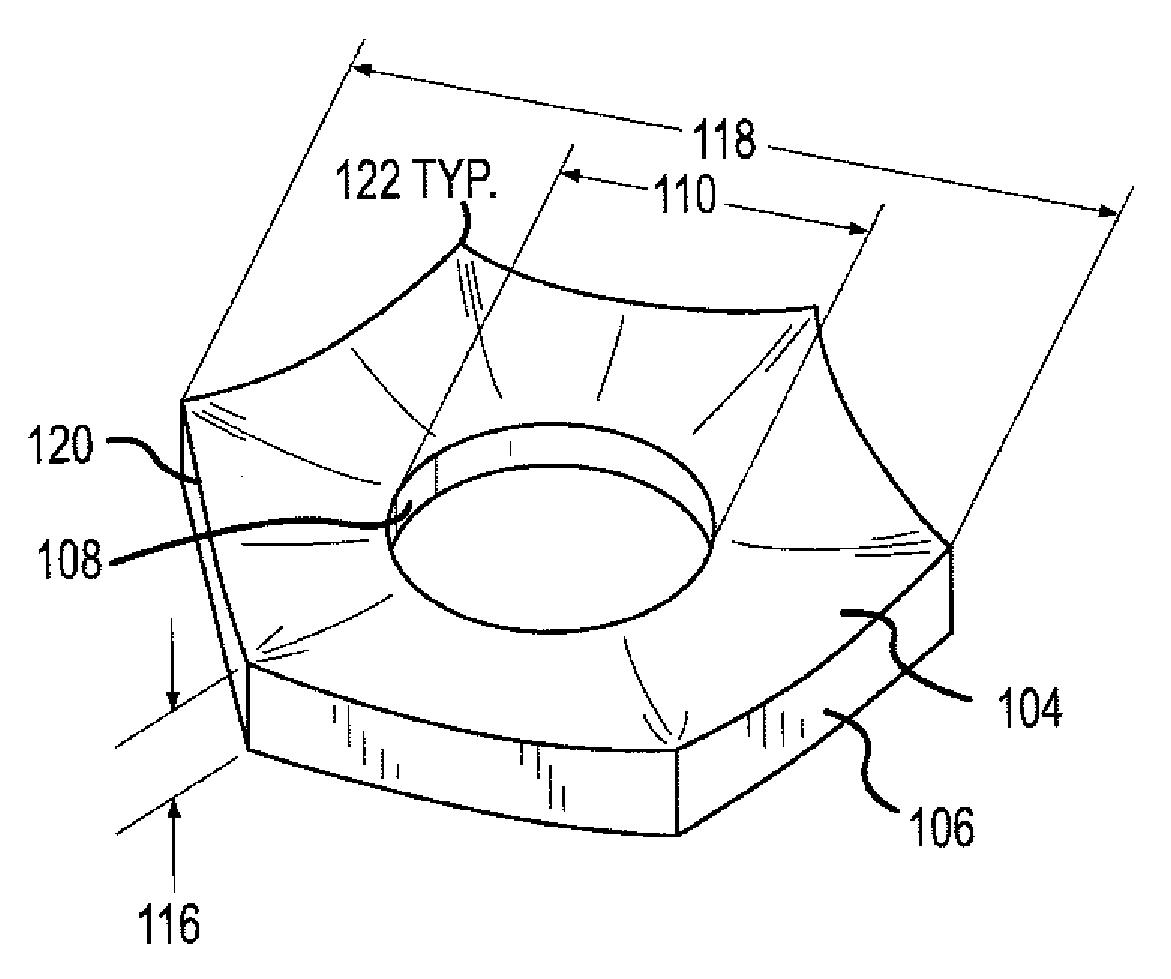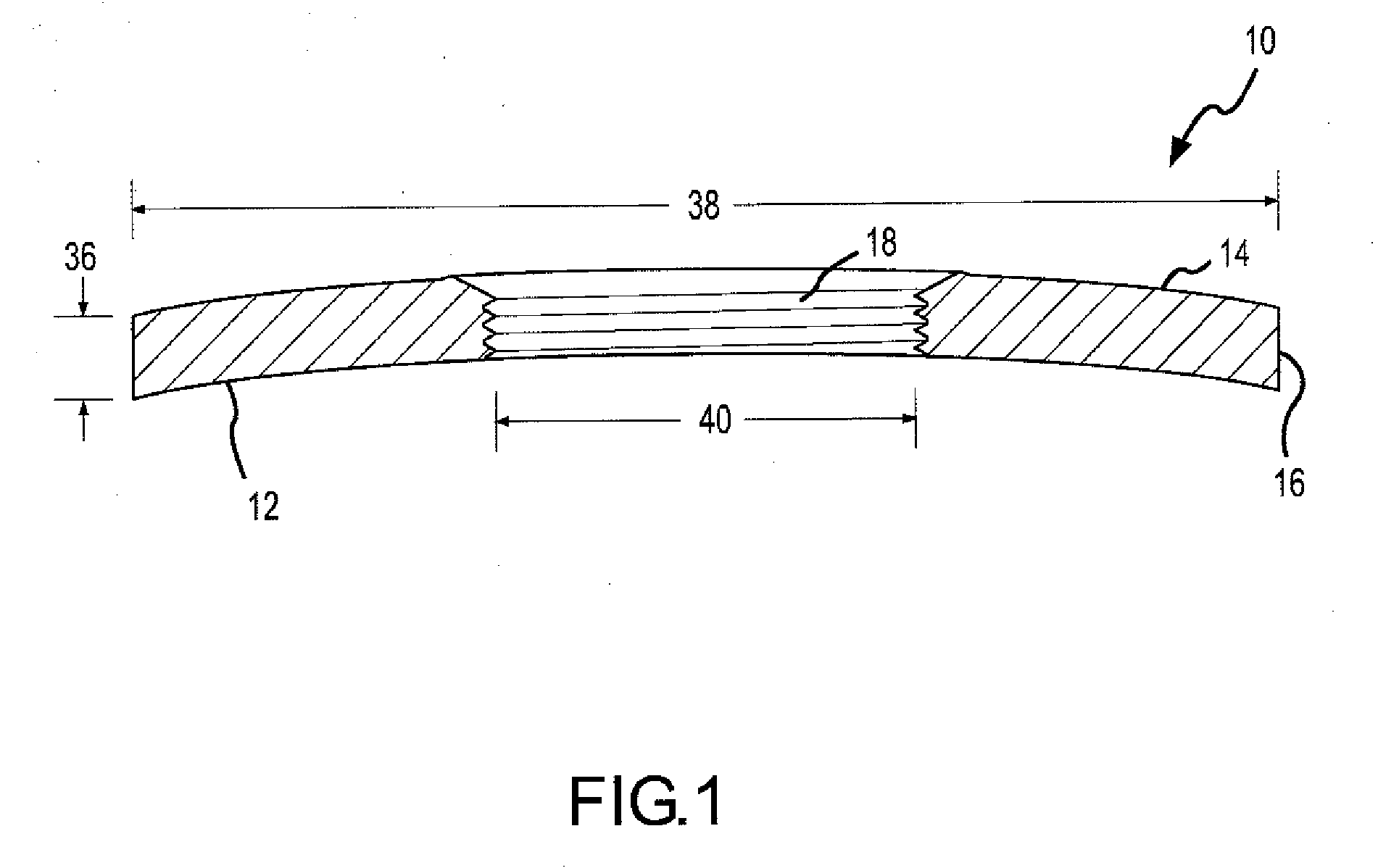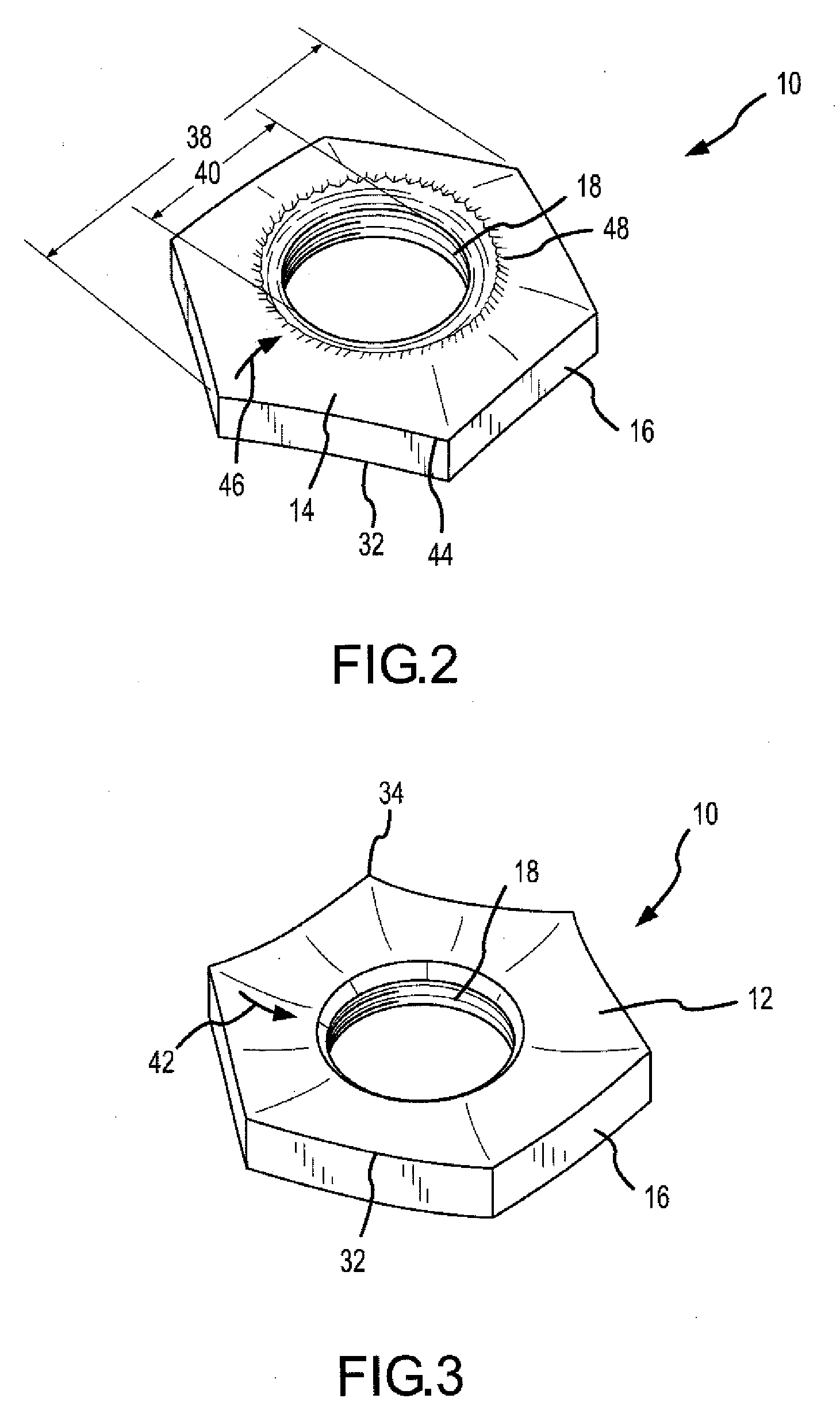Reactive Fasteners
a technology of fasteners and bolts, which is applied in the direction of threaded fasteners, screws, washers, etc., can solve the problems of side loads, such as torque, inducing torque in the bolt shaft, and potentially dangerous devices
- Summary
- Abstract
- Description
- Claims
- Application Information
AI Technical Summary
Problems solved by technology
Method used
Image
Examples
first embodiment
of a Biasing Fastener Adapted for Creating a Substantially Torsionless Live Load on a Bolted Assembly
[0062] Referring to FIGS. 1-3, the first embodiment of the biasing fastener 10 for creating a substantially torsionless live load on a bolted assembly is illustrated. The first embodiment biasing fastener is typically unitary being fabricated from a single piece of material, typically high strength steel. The fastener can be forged, machined, cast or produced by other suitable means known to one of ordinary skill in the art. The biasing fastener is comprised of a top surface 12, a bottom surface 14, one or more side surfaces 16, and a threaded bore 18. The threaded bore 18 is typically located in the center of the biasing fastener 10 and is typically a circular bored hole with inner diameter 40. The biasing fastener 10 is sized to allow a nut, upon tightening, to first contact the top surface proximate the intersection 32 of the top surface 12 and the one or more side surfaces 14. Ac...
second embodiment
of a Biasing Fastener Adapted for Creating a Substantially Torsionless Live Load on a Bolted Assembly
[0066] Referring to FIGS. 10-12B, a second embodiment of a biasing fastener 11 for creating a substantially torsionless live load on a bolted assembly is illustrated. Like the first embodiment, the second embodiment fastener is unitary. The biasing fastener 11 is comprised of a top surface 15, a bottom surface 17, one or more side surfaces 19, and a threaded bore 21. The threaded bore 21 is typically located in the center of the biasing fastener 11 and is typically a circular bored hole with inner diameter 23. The biasing fastener 11 is sized to allow a nut 25, upon tightening, to first contact the intersection 27 of the top surface 15 and the one or more side surfaces 19. Accordingly, the shape of the top surface 15 of the biasing fastener 11 is generally concave.
[0067] As illustrated, the one ore more side surfaces 19 comprise six side surfaces 19 hexagonally arranged. The tips of...
third embodiment
of a Biasing Fastener for Creating a Live Load on a Bolted Assembly and a Reaction Point for a Self-Reacting Tightening Tool.
[0069] Referring to FIGS. 7-9, 14, and 15, two versions of an embodiment of a biasing fastener 100 for creating a live load on a bolted assembly or a reaction point for a self-reacting tightening tool are illustrated. Like the first and second embodiments, the third embodiment fastener is unitary. Unlike the first and second embodiments, this embodiment does not create a substantially torsionless live load primarily because the bore 108 is unthreaded. Rather, a key feature of this embodiment is that it provides a reaction point for a self-reacting tightening tool, either by digging into the surface of the workpiece or by the friction created between a portion of the embodiment's bottom surface 104 and a first surface 30 of the workpiece.
[0070] The biasing fastener 100 is comprised of a top surface 102, the bottom surface 104, one or more side surfaces 106, an...
PUM
| Property | Measurement | Unit |
|---|---|---|
| Thickness | aaaaa | aaaaa |
| Force | aaaaa | aaaaa |
| Diameter | aaaaa | aaaaa |
Abstract
Description
Claims
Application Information
 Login to View More
Login to View More - R&D
- Intellectual Property
- Life Sciences
- Materials
- Tech Scout
- Unparalleled Data Quality
- Higher Quality Content
- 60% Fewer Hallucinations
Browse by: Latest US Patents, China's latest patents, Technical Efficacy Thesaurus, Application Domain, Technology Topic, Popular Technical Reports.
© 2025 PatSnap. All rights reserved.Legal|Privacy policy|Modern Slavery Act Transparency Statement|Sitemap|About US| Contact US: help@patsnap.com



